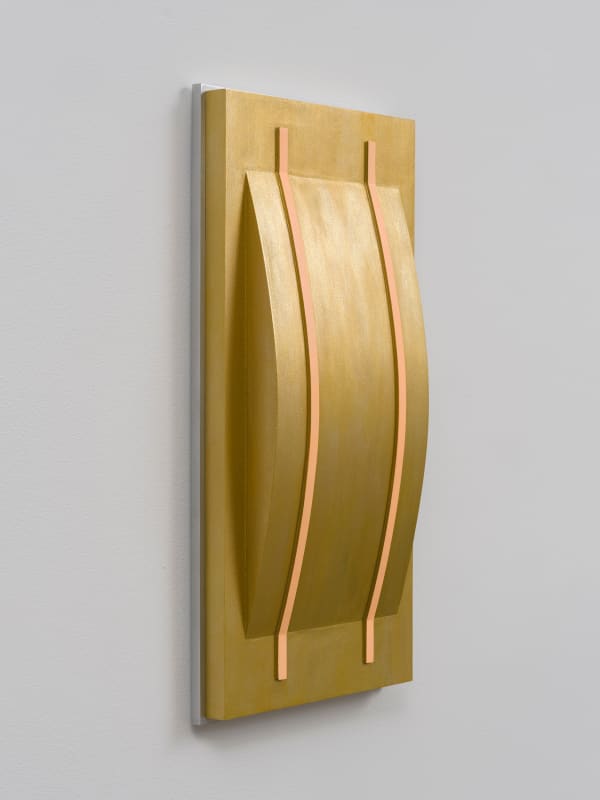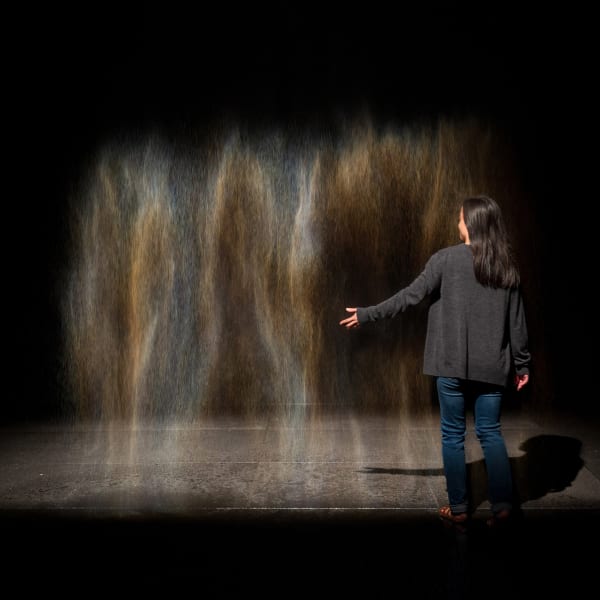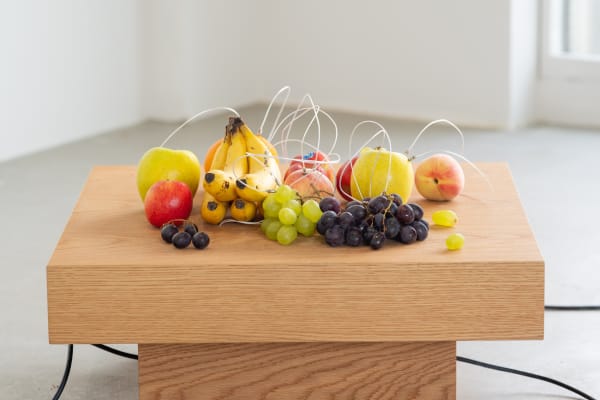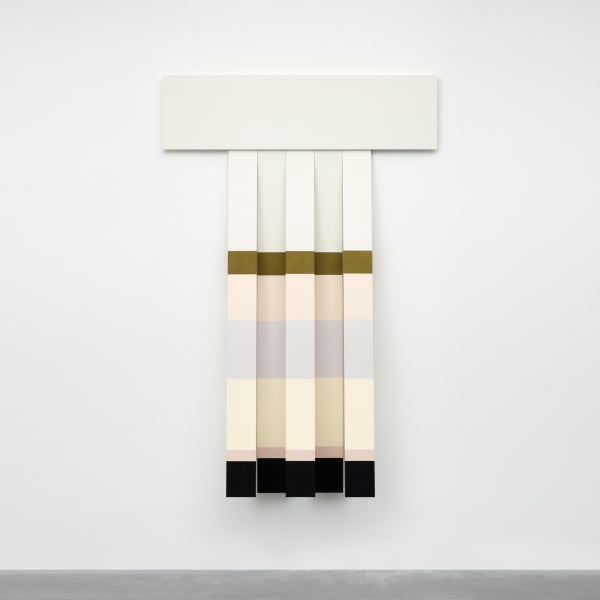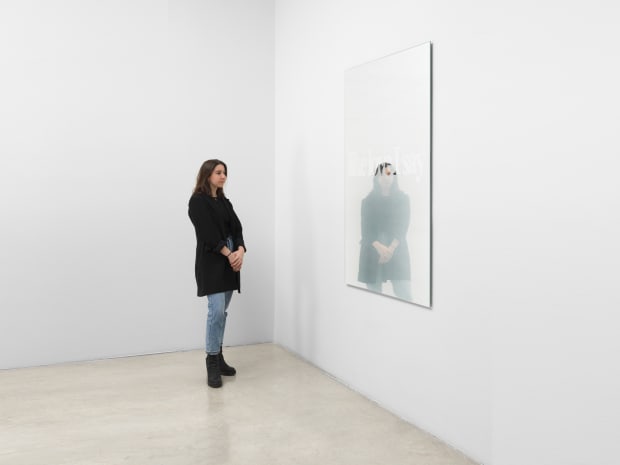
Over the past three decades, Monica Bonvicini’s has developed a multifaceted language of institutional critique. Working across media—from leather and chains to mirrors and neon—Bonvicini confronts the gendered politics of space and architecture, revealing the unseen power dynamics that pervade them.
Like Love I Say forms part of the artist’s enduring inquiry into literature and poetry. A complex technique of layered lacquer simulates a wet, foggy mirror.

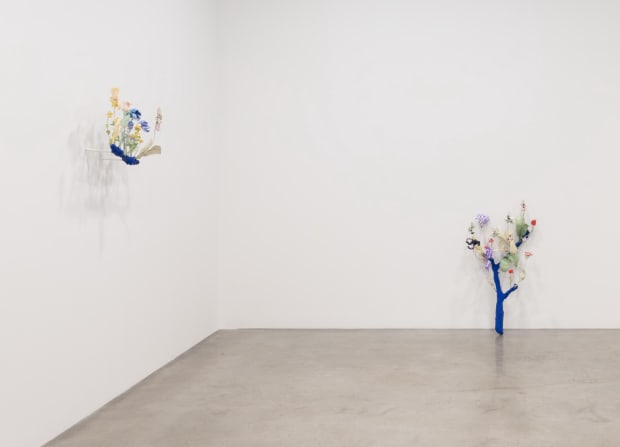
Nathalie Djurberg and Hans Berg have been collaborating for the past 20 years. Working in an intuitive and curious mode and uninhibited by traditional methods of art making, Djurberg laboriously handcrafts elaborate environments and characters out of clay, plasticine, foam, wire, fabric and paint resulting in a gummy, flamboyant aesthetic.The otherworldly flowers of The Enchanted Garden, burst out of matte blue branches. Jutting out from this precarious perch, stems and petals are sticky and improvisational. Their growth, as if by magic, is the evidence of a subconscious landscape.
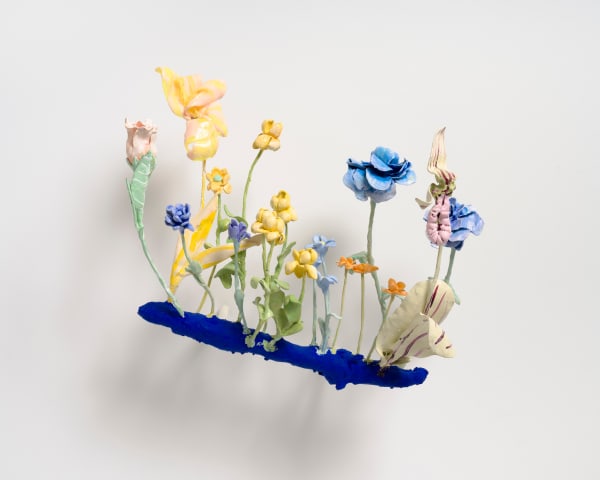

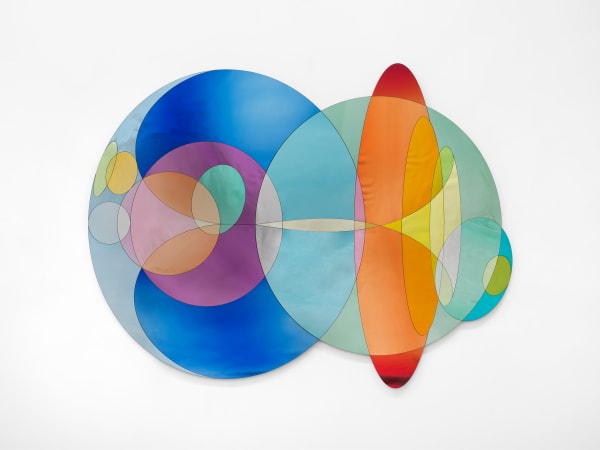

These works-- in watercolor, acrylic ink, handblown glass and silvered mirror--continue Eliasson’s investigation of color phenomena, a central concern for much of his work across all media, from large-scale installations to photographs, sculptures, and light projections. The artist is fascinated by the relativity of color perception, by the fact that how we see colors is extremely individual and dependent upon context. ‘Color’, he writes, ‘does not exist in itself but only when looked at. The unique fact that color only materializes when light bounces off a surface onto our retinas shows us that the analysis of colors is, in fact, about the ability to analyze ourselves.’


Shilpa Gupta’s Map Tracings series is comprised of outlined maps made of copper pipe, twisted to form three-dimensional linear sculptures. They render the familiar outlines of nation-states into peculiar forms, using shadow and illusion to produce an oscillation between recognition and perplexity.
Started in 2012 with the India Map, the work is adapted to each exhibition site, according to the country in which it is shown. Depending on the viewers’ movements and their position in the space, the well-known shape becomes a strange line that literally twists our perception and reminds us that the nation is an artificial construct, and what it maps first and foremost is the way it imagines itself.
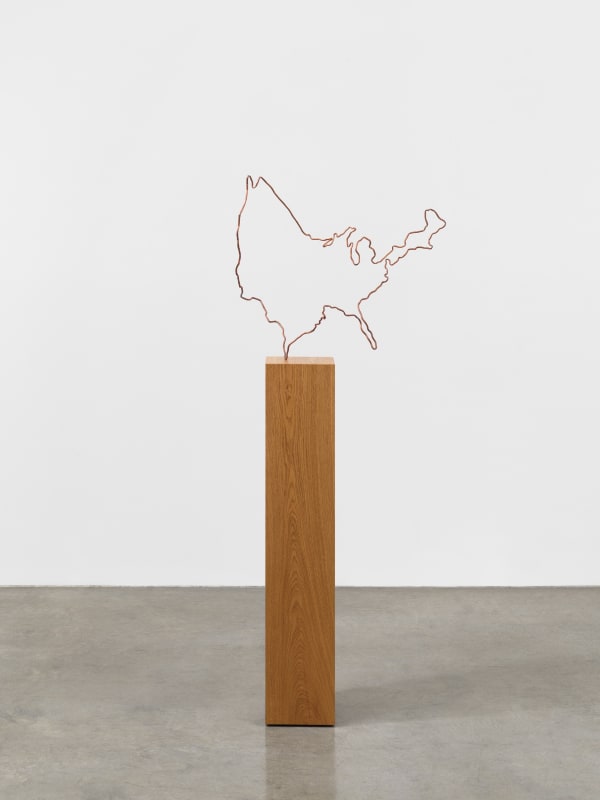



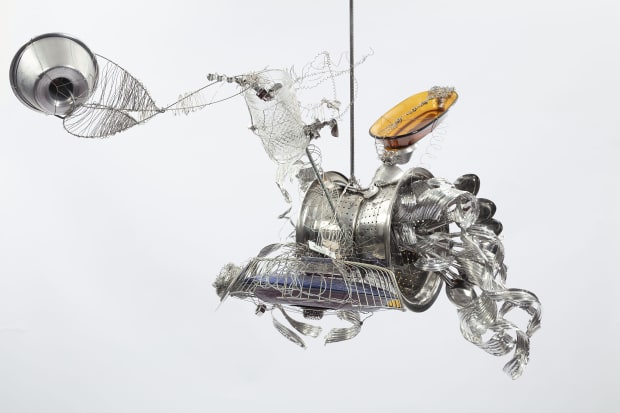



For thirty years, Lima has developed an idiosyncratic and entirely unique philosophical language. With a tendency towards the absurd and the sensational, she allows the audience to lose themselves in this potential for change. Lima puts forward an ecstatic dialectical gambit in colored glass, whorls of wire and bent cutlery.
Laura Lima's Balé Literal is an exhibition in motion — objects and artworks are 'dancers' animated by a pulley system in a choreography of the absurd. The Disco Voador (Flying saucer) is suspended from a spring, allowing it to bounce and jump with the slightest tug. Originally inspired by Ed Wood’s iconic flying saucers in the film Plan 9 (improvised out of a commercial model kit), the saucers are made from the typical plates of the Brazilian working class.
Balé Literal is on view at Tanya Bonakdar Gallery, New York, until May 30, 2025. Previous iterations of the Balé were staged at Instituto Inhotim (2024) and MACBA (2023).
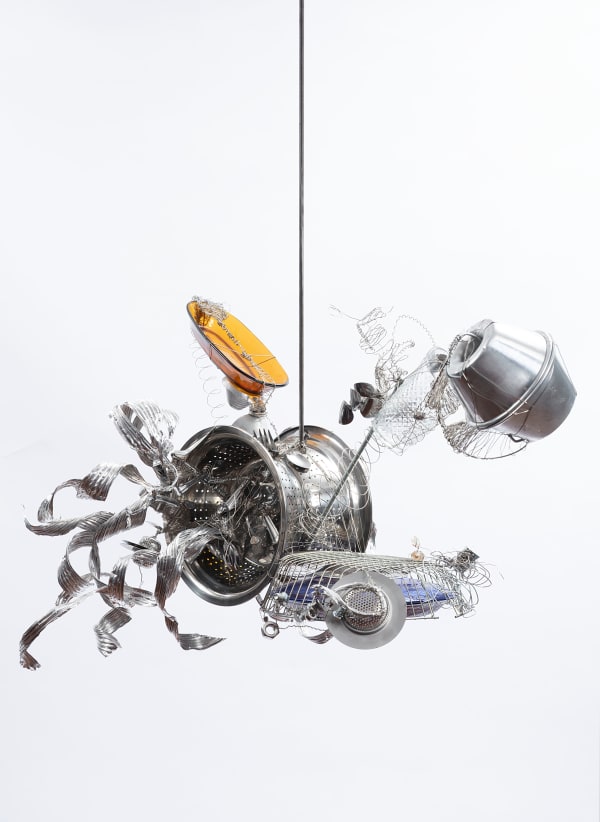

Remarkable in execution and detail, Head with Rope was created within an intimate logic that has now become signature to Manders' practice. The work appears to be soft clay mid-way through the process of becoming a sculpture. The artist freezes a very specific moment in time, highlighting the fragility of every moment that passes. The manipulation of material generates a sense of puzzlement and awe, masterfully creating a sense of timelessness — while the sculpture seems to be just made, it is at the same time enigmatically atemporal.
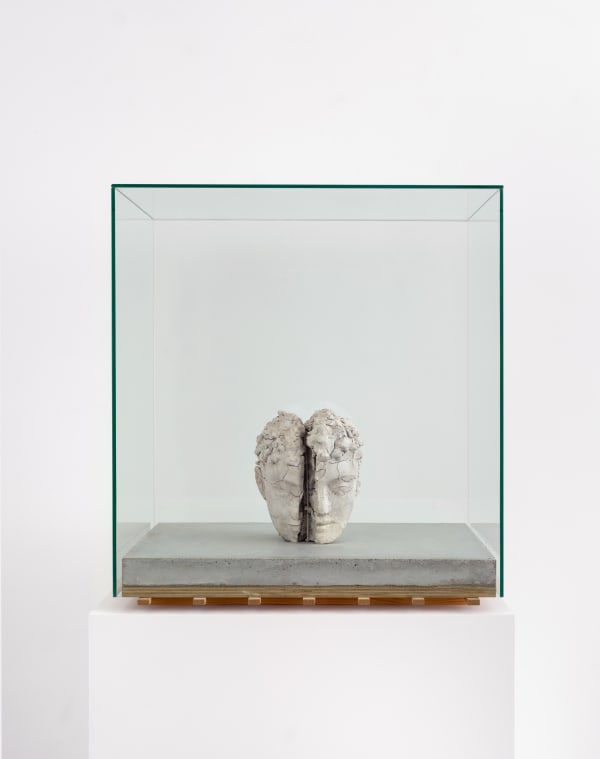


Yuko Mohri uses simple circuits to make unseen vibrations, magnetic forces, and electrical pulses visible. Mohri’s Urban Mining series activates waste materials found across the city — empty cans, disused and discarded objects — the ‘urban mine’ of untapped resources. This series began when Mohri noticed the old street lamps in Tokyo being discarded and replaced by LED lights. Waste materials like street lamps and empty cans, serve as intermediaries in a miniature landscape of consumption.
In this work, a live electric current flows through the layers of empty cans, while the wind or faint vibrations cause the cables to touch each other in a random fashion, acting as a trigger that illuminates the miniature street light models.
The title is inspired by the “urban mine” of useful resources that can be found in the large quantities of discarded products in a city like Tokyo or New York, as well as the IT/computing term “mining,” which refers to the act of analyzing large volumes of data.
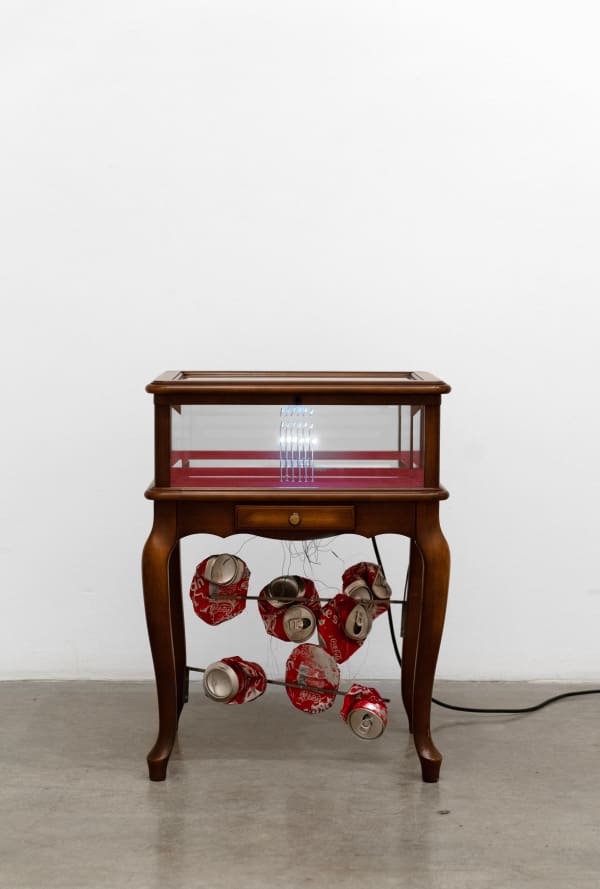

In this series, Lisa Oppenheim explores the legacy of Edward Steichen (1879-1973), well-known for his photographic innovations and experimental approaches to flower-breeding. In 1910, botanist Fernand Denis created and named an iris hybrid "Mons. Steichen" after him, though no images or specimens survive.
Steichen pioneered dye transfer printing in the 1930s, experimenting with unconventional color combinations to create vibrant, almost psychedelic images. In his spirit, Oppenheim used AI to generate hypothetical crosses between the parent iris species (Chameiris Alba and Iberica). She then produced analog prints of the AI-generated images using the labor-intensive and almost entirely outmoded dye transfer process. Using non-standard colors, she created diverse interpretations of the lost "Mons. Steichen" hybrid that explore the concept of both genetic and photographic verisimilitude.
Lisa Oppenheim: Mons. Steichen is on view at MUDAM Luxembourg until August 24, 2025.



Sherrill Roland’s work 168.827 (F6), gives visual form to vivid memories of the ten months he spent wrongfully incarcerated. In this steel and enamel sculpture, Roland recalls the experience of spending day after day in prison, passing the time by tracing the outlines of the white cinder blocks, which measured 8 x 16 x 8 inches and formed his two-man cell. The repetitive, tactile action became a method of meditation that offered a mental escape to the freedom beyond the physical confines of the prison cell.
168.827 (F6) references this repetitive action -- creating steel channels that trace the movement that allowed him respite, while physically enforcing his enclosure. Roland fills the channels with resin mixed with Kool-Aid, often served in prison, drawing our attention to the line and the space between it.
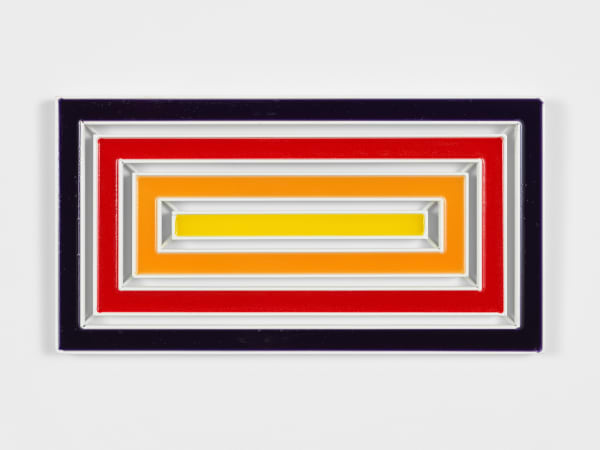


Analia Saban dissects and reconfigures traditional notions of painting, often using the medium of paint as the subject itself. Blurring the lines between painting and sculpture, imagery and objecthood, her work frequently includes plays on art historical references and traditions. This body of work sees Saban continue her investigations into the relationship between paint, pigment and canvas. Starting with her research into the history of pigments and the composition of paint that she conducted during a residency at the Getty Conservation Institute in 2016, Saban has found it interesting to change the relationship between paint and canvas. In this work, the paint is woven through the linen.


The Aeolic Cluster series advances Saraceno’s long-standing artistic inquiry Air-Port-City / Cloud City, a proposal for airborne habitats as a new, alternative form of urbanism. This work is composed of a number of interconnected modules constructed from mirrored hand-blown glass, a material that, like clouds, exists at the intersection of air, water, and earth. In nature, matter floats through the atmosphere until it clusters together to form groups of clouds. The irregular facets of the sculpture are inspired by the geometry of the Weaire-Phelan structure, found in the way foam and soap bubbles form. The reflective surfaces illuminate an aqueous world of gold and silver, where boundaries become fluid and human spatial coordinates are challenged. What alternative ways of being emerge through a momentary immersion in this floating, shimmering world of light?

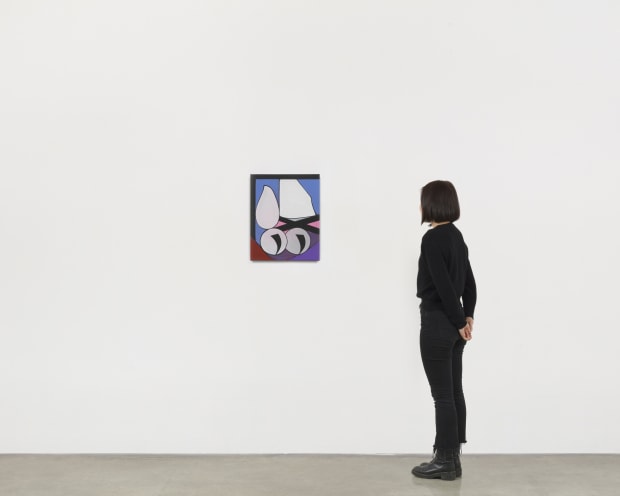



Through complex constellations of objects and a proliferation of images, Sarah Sze expands upon the never-ending stream of visual narratives that we negotiate daily, from magazines and newspapers, television and iPhones, to cyberspace and outer space. Time is Slowed by the Earth evokes the generative and recursive process of image-making in a world where consumption and production are more interdependent, where the beginning of one idea is the ending of another— and where sculpture gives rise to images, and images to sculpture.
Sze expands her work by embedding her nuanced sculptural language into the material surfaces of painting and into the digital realm—collapsing distinctions between two, three and four dimensions. Her practice fundamentally alters our sense of time, place, and memory by transforming our experiences of the physical world around us.
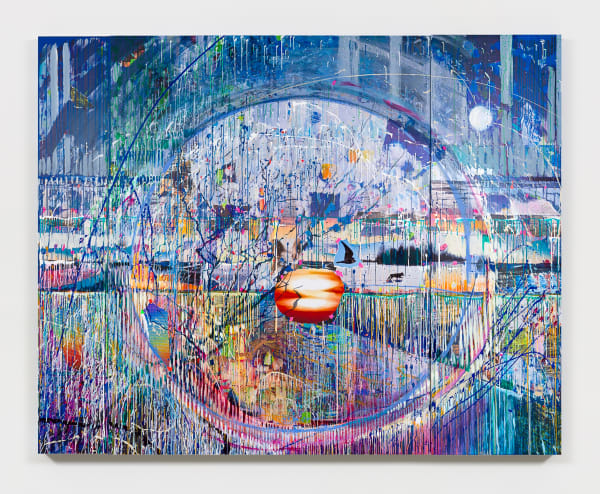

With an interest in forming a language through concise material abstraction, Lisa Williamson creates works that are visually precise and physically resonant. Williamson’s painted wall reliefs and sculptures convey language as a series of formal compressions — of landscape, of architecture, and of figuration. At once systematic and intuitive, Williamson tunes and calibrates material space, in that of her individual works and in their relationship to one another.
